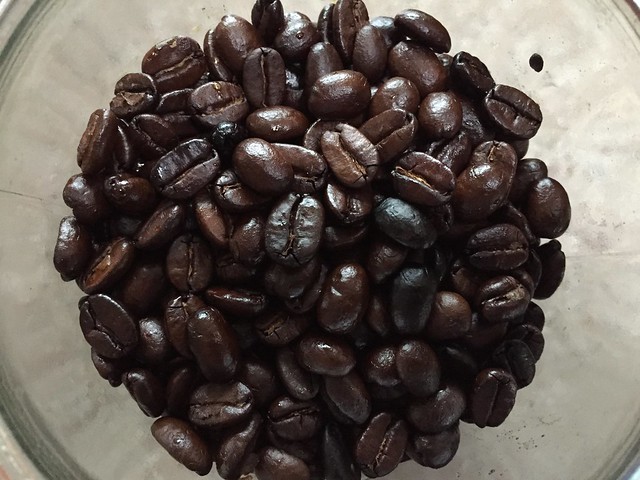コーヒーの実から豆を摘出する方法、いままで"Natural Dry"か"Washed"しか知らなかったけど、今回ローストした豆、
このニカラグアの豆、"Honey"という方法で豆を抽出しているらしい。🍯🍯🍯???
ということで早速ググったら、
Honey Process
Honey process is currently all the rage in Costa Rica and it has started to spread to all the other Central American countries. Remember that the mucilage of the coffee cherry is sticky and slimy, so it is sometimes called “honey”. During the Honey Process, coffee is dried with some or all of the mucilage remaining on the parchment encasing the seed. Coffee cherries are picked, sorted, depulped, and then moved to drying patios or beds for various periods of time.Because there is a little bit of fermentation happening in the short amount of time it takes for the mucilage to dry, coffees processed in this way feature a little more acidity than Pulped Naturals (Pressure-Washed) coffees, but significantly less acidity than Washed or Natural/Dried-in-the-Fruit coffees.
コーヒーの実には"mucilage(粘液)"と呼ばれるレイヤーがあり、この"Honey"と呼ばれる抽出法はこの"mucilage"を残して乾燥させる。なのでこのネバネバ感から"honey"と呼ばれるんだそう。
それより上のチャートで気になったのが、"fermentation"。製法によって発酵具合が異る。発酵が進むとより酸味が強くなるのはパンと同じだけれど、結局それがコーヒーの最終的な酸味に繋がるというのは新発見。酸味は豆本体よりも豆摘出方法に寄るところが大きいのか。
んで、今回のニカラグア豆に戻るけど、この豆、ロースト時にやたらchaffが舞う。なるほど、これは多分"Honey"に寄る抽出方法なのでchaff部分(= 上の図のsilver skin部分)が完全に残ってるためだろう。しかもやたらロースト時間短し。1st crackからすぐさま2nd crackに突入。なので期せずしてViennaまでロースト。
んでx2、飲んでみたけど、これは旨い!深煎りなのにまろやかで酸味も少ない。気に入った。


